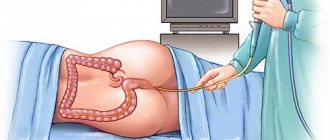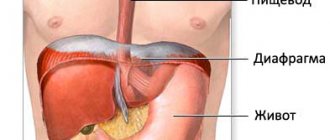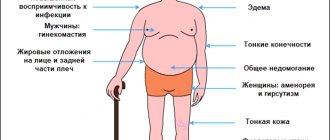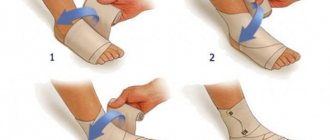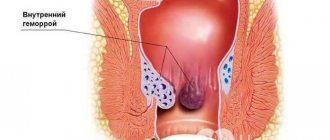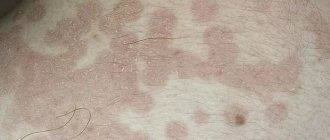Statistical data from annual professional and pediatric examinations indicate an increase in patients suffering from foot pathologies. Flat feet occupy a significant place in the group of disorders. In the early stages, the disease manifests itself in childhood. If flat feet were not discovered in childhood, at an older age changes in gait occur or functional pain in the back or joints occurs.
Flat feet affect the general condition of the human body and provoke fatigue. As a result, there is a decrease in working capacity. What is the cause of flat feet? What types of diseases are observed in humans, is it acceptable, and can the disease be considered congenital? How to recognize flat feet and where to turn at the slightest suspicion? Why do many people suffer from this disease, how to take preventive measures? Let's take a closer look.
general description
To understand what this disease is, it is necessary to dwell on the features that the affected area has, that is, on the arches of the feet and on the feet themselves.
The structure of the foot includes many ligaments, joints and bones; due to the peculiarities of their connection with each other, the ability to walk and bear weight is ensured. With such a connection, as is clear, the elements of the foot are connected to each other, as a result of which two arches are formed, and it is these arches in the foot that act as arches. These arches are located in the area of the bases of the toes (transverse arch) and in the area of the inner edge of the foot (longitudinal arch). The presence of such arches in the foot allows it to rest on the ground when walking not with its entire surface, but only with areas of localization of three main points sufficient for this. The reader, trying to understand exactly what points in the foot we are talking about, will probably easily understand that the heel bone, the base area somewhat further from the little toe, and a similar base area located just below the big toe are considered as such. Under the condition of deformation of these arches, the foot rests in full, as a result of which the shock-absorbing properties of the foot are disrupted, and this, in turn, causes the symptoms of flat feet.
Let us dwell in more detail on the functions performed by the arches of the foot. As we have already indicated, they ensure weight retention when walking (balance), as well as shock absorption that occurs during walking. If the ligaments and muscles in the foot cease to properly provide the functions assigned to them, stopping working and losing their inherent strength, thereby becoming weak, the normal shape of the foot is also disrupted. As a result of the subsidence of the foot that occurs against this background, as well as due to its adoption of a completely flat position, the already noted spring function is lost. This leads to the fact that the load previously placed on the feet begins to be compensated by the joints of the legs - in other words, those joints that are higher are already involved, and these are the ankle joint, knee joint and hip joint. Naturally, with such a replacement of functions, an even greater load falls on the spine. Considering the fact that neither it nor the newly involved joints are, in principle, intended to directly participate in the functions performed during such deformation, these functions are not performed very successfully by them, which is why failures in their work occur quite quickly.
Considering these features of the pathological process accompanying flat feet, it becomes clear why pain in the legs and pain in the spine occur, although not all patients associate one with the other, and certainly not all attribute the listed symptoms to the main root cause, that is, to flat feet.
It should be separately noted that pain with flat feet appears at a stage that can be described as a lack of body strength to ensure safe and normal movement, even due to such an unusual method of compensation. The result of the influence of flat feet is pain in the hip, ankle and knee joints; in addition, due to the load placed on the spine, the posture of patients also becomes pathological. Against the background of the listed pathological changes accompanying the functioning of the musculoskeletal system, scoliosis and arthrosis may subsequently develop. In addition, it is flat feet that in many cases cause the development of varicose veins.
As you can see, the issue of maintaining ligaments and muscles in a normal state for performing their functions is extremely important, that is, in a state of elevation, due to which the load that otherwise falls on the joints of the legs and the spine is eliminated.
What is noteworthy is that flat feet have its own interesting feature, and it lies in the fact that this disease can develop not only in people whose professional or general daily activities require the need to be in a standing position, but also in people whose activities fall more under the influence of the “sedentary” criterion, that is, as is clear, in a sitting position. This feature is due to the fact that in a sitting position, the ligaments and muscles lose their inherent strength, becoming, accordingly, weak, and in a standing position, on the contrary, there is too much load, which also leads to difficulties - the system of ligaments and muscles of the foot simply ceases to cope with such a load .
Diagnostics
The first stage of diagnosis is examination of the patient. The orthopedic doctor pays attention to the smoothed depression in the sole area, altered position of the toes, and swelling. When collecting anamnesis, he asks the patient about pain in the legs, hereditary factors, heart disease, and rheumatic pathologies. Next, the specialist prescribes a number of diagnostic measures, which include:
- geometric and topographic study of the sole (podometry, plantography);
- X-ray image, which helps determine the severity of the disease, deformity (valgus);
- conducting CT, MRI to assess the affected soft tissue.
The patient is sent for additional examination to a phlebologist or neurologist, since transverse flatfoot in its development has a pathological effect on the fibers of the nervous system and blood vessels in the immediate vicinity.
Flat feet: causes
Among the main reasons provoking the development of flat feet are the following:
- overweight;
- pregnancy;
- features of activity that cause excessive physical activity;
- heredity (flat feet in close relatives);
- wearing shoes of poor quality, too narrow or small shoes;
- weakening of the ligaments and muscles of the feet, due to lack of appropriate loads or age, etc.
There is such a type of flatfoot as congenital flatfoot. In this variant, the pathology appears quite rarely, accounting for about 11% of the total number of pathologies associated with foot lesions. Congenital flat feet can be provoked by various forms of exposure to the fetus during the period of intrauterine development, in particular, it can be exposure caused by bad habits of the mother, exposure to radiation, etc.
In addition, flat feet can be caused by rickets. In this case, it is associated with the previous development of rachitic foot in children, which, in turn, occurs against the background of vitamin D deficiency, which provokes a decrease in bone strength in response to mechanical stress. Because of this, the muscular-ligamentous apparatus is subject to weakening, which, as we have already discussed, is the direct cause of the development of flat feet.
Flat feet can also be paralytic. Paralytic flatfoot develops against the background of a previous history of a disease such as poliomyelitis; the degree of flatfoot in this case is directly determined by the intensity of the severity of the manifestation of concomitant paralysis.
A bone fracture can cause the development of flat feet. In this case, such a variant as traumatic flatfoot is considered; its symptoms appear with fractures affecting the bones of the foot. In addition, this type of flatfoot can also develop as a result of improper fusion of bones, again, against the background of previous fractures.
And finally, flat feet can be static, and this variant of flat feet is diagnosed most often. Static flatfoot, the symptoms of which are caused by an actual decrease in muscle tone, develops as a result of too much fatigue, which develops due to prolonged stress on the legs.
Flat feet: types
Considering that the foot, as we have already indicated, has two arches, respectively, deformation in any of them already determines the corresponding types of flat feet. In particular, this is longitudinal flatfoot, in which the longitudinal arch is subject to deformation (reduction), and transverse flatfoot, in which, accordingly, the transverse arch is subject to deformation. Taking this into account, the foot increases in both length and width. If both the transverse and longitudinal arches are flattened at the same time, then this is combined flatfoot ( in other words, it can be designated as longitudinal-transverse flatfoot). The first two variants of flatfoot are detected quite often, but the predominant positions in terms of prevalence are assigned to the transverse form of the deformity.
In addition, flat feet can be congenital or acquired. Congenital flatfoot, diagnosed in children, appears quite rarely; here, as we discussed above, the main influence was exerted by malformations that directly affect the development of fetal tissue. Such flat feet can be treated from the very first days of the child’s birth. Acquired flatfoot, in turn, is diagnosed in the vast majority of cases, as its main forms - those variants that we associated above with the influence of specific causative factors, that is, traumatic, rachitic, paralytic and static flatfoot.
Flat feet: symptoms
Let us dwell on those main options that, when considering flatfoot, are distinguished in accordance with the characteristics of the lesion, that is, longitudinal, transverse and combined flatfoot, as well as the symptoms inherent in them.
Longitudinal flatfoot: symptoms
Longitudinal flatfoot is accompanied by the entire surface of the foot coming into contact with the floor, which causes an increase in its length. The main symptom corresponding to the manifestation of longitudinal flatfoot is a reduction in the distance that is normally formed between the floor surface and the foot from its inner edge. Longitudinal flatfoot also becomes the cause of the development of clubfoot, as a result of which shoes wear out according to a certain “pattern”: from the inside along the length of the heel and sole.
The degree of foot deformation determines the corresponding degrees of flat feet, there are three in total.
- The first degree of flatfoot is characterized by the absence of visible deformation, which is caused by the still weak severity of the accompanying changes. Flat feet, the symptoms of which at this stage manifest themselves in the form of fatigue noted in the legs after undergoing significant physical activity, for example, after a long run or covering significant walking distances. Pressure on the foot area is accompanied by pain. Towards the evening, symptoms may be supplemented by disturbances in the smoothness of gait against the background of accompanying sensations, as well as swelling of the feet.
- The second degree of flatfoot is characterized by moderate severity of flatfoot. At this stage of disease progression, the arch of the foot disappears and the symptoms intensify. So, the pain becomes more severe, manifests itself much more often, in addition, it spreads to the ankle area, as well as to the lower leg. At this stage of the disease, the smoothness of gait is lost, the muscles of the foot lose their characteristic elasticity.
- The third degree of flatfoot manifests itself in an even more pronounced form, which is also accompanied by increased deformity. Swelling and pain in the feet become constant companions of the general condition of patients, in addition to which a very severe headache appears. Pain in the lumbar region is also present. There is a decrease in working capacity, difficulties arise even when it is necessary to overcome small distances. 3rd degree flatfoot of this form deprives a person of the opportunity to walk with it, being shod in ordinary shoes due to the extreme severity of the deformation processes.
Transverse flatfoot: symptoms
Transverse flatfoot is accompanied by a decrease in the length of the foot, which occurs due to the divergence of the bones located in it. Also relevant is the outward deviation of the thumb with the accompanying deformation of the middle finger; in addition, it changes in its own shape - it becomes hammer-shaped. In addition to this, there is the appearance of a bone thickening in the base of the thumb, which has the shape of a lump and is accompanied by pain.
This form of flatfoot is also accompanied by various stages of progression, on the basis of which, accordingly, degrees of transverse flatfoot are distinguished, similar to the previous version of the disease, there are three of them.
- Transverse flatfoot, first degree. This degree of flatfoot is characterized by a weak expression of changes relevant to the disease. For the angle of deflection corresponding to the position of the first finger, a limit is defined that does not exceed 20 degrees. Prolonged standing or walking is accompanied by fatigue. In the area where the 2-4 toes are located, characteristic thickenings of the skin are formed - these are corns; in addition, mild soreness and redness appear, detected on the side of the first toe.
- Transverse flatfoot, second degree. At this stage of disease progression, the accompanying changes can be defined as moderately pronounced. For the angle of deflection corresponding to the position of the first finger, a slightly different limit is already defined - from 20 to 35 degrees. Exposure to stress leads to a burning sensation in the foot area, as well as pain in it; these sensations are also noted in the area of the first toe (especially if the person is wearing shoes). The formed corns at this stage of the disease increase in size, the area where the toes are located changes to their characteristic flatness.
- Transverse flatfoot, third degree. As the disease progresses to this stage of its manifestation, the deformation process is most pronounced in its own manifestations; the actual angle of deviation corresponds in position to a figure of 35 degrees or more. The load is accompanied by the occurrence of constant and severe pain in the area of the foot, its anterior part is very flattened. Corns formed in the area of the fingers reach significant sizes. The position of the first toe changes sharply, resembling a dislocation, 2-4 toes are subject to severe deformation, and bursitis may also develop (this disease is accompanied by inflammation of the area of the periarticular bursa).
Degrees of flat feet
As for such a form as mixed flatfoot, it is accompanied by the manifestation of symptoms inherent in both forms considered, that is, both the symptoms of transverse and the symptoms of longitudinal flatfoot. We also note that the manifestations of mixed symptoms are characterized by a greater degree of severity.
In addition to this, you can also consider the signs of flat feet not only from the sensations accompanying this disease, but also from a slightly different side, they are as follows:
- shoes began to wear out too quickly, this is especially noticeable if they have heels;
- physical activity began to be accompanied by sore feet;
- standing work and normal walking began to be accompanied by rapid fatigue of the legs;
- walking in heels became difficult;
- by the end of the day, characteristic symptoms of flat feet appear (heaviness and swelling in the legs, a feeling of legs “filled with lead”, cramps);
- there is a feeling that the foot is increasing in size (which, in fact, is practically the case), both in length and width, which makes it necessary to buy shoes that are larger than the usual size; in this case, it is no longer possible to fit into the previous shoes.
Flat feet: photo
External signs of developing flat feet
Determining the presence of flat feet “by eye” is quite simple. Its strong form modifies the foot, forming a “bone”: the big toe is bent, and it is placed above the second. The deformity also affects the middle finger, which suffers from extreme stress.
You can check whether you have flat feet in a very easy way by making an imprint on the dry surface of the floor with wet feet (using water or a rich cream). It is normal for the outer part of the feet to be imprinted. If the entire foot is “reflected”, then we can judge the presence of flat feet. Symptoms of the disease include the following:
- pain and fatigue of the legs (in the evening the sensations intensify);
- swelling of the lower extremities;
- feeling of tight shoes;
- more severe wear on the inside of the soles of any shoes;
- pain in the lumbar region;
- changing posture, gait;
- development of clubfoot;
- the appearance of heel spurs;
- severe pain in the joints of the knees (in the case of an advanced form of the disease);
- curved spine;
- inability to maintain balance or squat;
- an increase in the length and width of the foot at the last stage of pathology;
- purplish-blue color of the foot (due to obstructed blood circulation).
| Clubfoot with transverse flatfoot |
The main symptoms of the pathology relate to:
- the process of smoothing the transverse bend of the foot, leading to deformation of the toes;
- rough skin appearing on the feet;
- hammertoes;
- pain that occurs in the top of the foot.
| Characteristic corns with developing flat feet |
Transverse flatfoot also has one of the main symptoms - a deformity of the big toe, called hallux valgus. Medicine defines this type of pathology as bursitis. It is caused by constant mechanical irritation.
| Valgus deformity |
Flat feet in children: symptoms
Based on approximate statistical data, it can be stated that when examining children of preschool age, flat feet are detected in approximately 65% of cases, while completion of school is accompanied by an even greater increase in this figure. Often parents take flat feet less seriously than they should, believing that if there are no special changes and there is no disability due to this disease, then it is not so dangerous and will go away over time. Meanwhile, flat feet never go away on their own; moreover, advanced cases of its course are accompanied by additional difficulties; treatment becomes not only expensive, but also more serious in terms of intervention. So, with the indicated picture of “neglect” of the disease, surgery can be performed.
How, besides possible treatment only through surgical intervention, is flat feet dangerous? At a minimum, it can lead to the development of a number of other, no less serious diseases, namely scoliosis, arthrosis, radiculitis, osteochondrosis, varicose veins and arthritis, and this is not the entire list. In addition, flat feet are one of the reasons for the development of an accelerated scenario for wear and tear of the musculoskeletal system.
The formation of a child’s foot occurs before he reaches the age of three. Like any other disease, the sooner flat feet are diagnosed, the easier it will be to treat. All children are born with so-called imaginary flat feet; it is imaginary for the reason that there is a significant amount of subcutaneous fat in the foot.
One of the features, and at the same time one of the advantages of this disease in children in terms of its reversibility, is that gradual maturation is accompanied by a natural relief from flat feet. This happens naturally, with the child gradually learning to walk and run, which is also accompanied by muscle development. Against the background of these changes in the child’s life, the structure of his foot also changes, and its familiar shape appears. Taking into account the already noted age at which the full formation of a child’s foot occurs, we can add that in children under three years of age, a flat foot simply cannot be classified as flatfoot.
Flat feet, as we have already highlighted, can be congenital or acquired, while the development of congenital flat feet is preceded by the relevance of developmental defects during the period of intrauterine development of the fetus.
As reasons that provoke the development of flat feet in a child, we can identify problems similar to those that provoke flat feet in adults:
- wearing shoes of inadequate quality and parameters (size, width, etc.);
- overweight;
- improper fusion of the bones of the foot after a fracture;
- rickets in a child, disturbances in the metabolism of phosphorus and calcium;
- prolonged muscle spasm against the background of hormonal changes in the body during puberty;
- prolonged stay in bed when suffering from illnesses;
- ballet classes;
- lifting weights;
- too much joint mobility.
Symptoms of flat feet in children are similar to those in adults, including fatigue and pain in the legs. The appearance of a headache as part of a deeper form of the disease can cause a child’s decreased performance at school. Against the background of prolonged joint irritation caused by flat feet, their inflammation can develop, which is defined as arthrosis. If the spine is affected, its curvature may subsequently develop, and this, in turn, determines the diagnosis of scoliosis for the child.
Degrees of the disease
Pathology differs in congenital and acquired types, as well as in the following degrees:
- Weakly expressed. With it, the thumb deviates by a maximum of 19 degrees. The patient experiences slight swelling and feels weakness in his legs.
- Moderately expressed. The angle of deflection of the finger can be 40 degrees. The patient has difficulty moving, and the pain in the legs becomes more intense.
- Strongly expressed. The finger deviates more than 35 degrees. The feet are deformed, the patient feels pain in the lumbar region and lower extremities. Movement is carried out with great difficulty.
Children and adults have no differences in the symptoms of the disease, but making an accurate and final diagnosis is a matter for a specialist. Corrective therapy and its methods depend on the causes and process of development of flat feet. Only a doctor can determine them, so diagnosing yourself and implementing therapeutic measures is fraught with aggravating the course of the disease.
Diagnosis
Flat feet can be determined not only on the basis of the clinical manifestations of the disease, but also on the basis of certain methods, based on the results of which one can understand at what stage the pathological process is. Such methods include, in particular, plantography, podometry, as well as the Face analysis method, radiological and clinical diagnostic methods. Thus, plantography makes it possible to determine the severity of the disease we are considering based on the results of foot prints, for which they are lubricated with a special solution, and then prints are made on paper while resting their entire weight on it. Carrying out podometry makes it possible to determine the percentage relationship between the length of the foot and its height.
Plantography as a diagnostic method
The basis for the clinical method is the construction of a triangle with a base corresponding to the distance between the location of the first metatarsal bone (in particular its head) and the calcaneal tubercle. The location of the apex of such a triangle is marked from the apex of the inner ankle when one leg reaches the area of the apex of the heel angle, and the other leg reaches the location of the metatarsal bone (its head). In normal feet, the height of the arch is about 55-60 centimeters.
Clinical method for diagnosing flat feet
Flat feet: diagnostic method by footprint
Treatment
The main goal of flatfoot treatment is to eliminate the pain that accompanies this disease in the affected area, that is, in the foot. In addition, it is important to strengthen the ligaments and muscles of the leg along with the restoration of the inherent functions of the foot. Treatment of flat feet can be conservative, that is, using various medications, procedures, and other methods, or surgical, that is, it is treatment through surgical intervention directly in the affected area.
Conservative treatment consists of implementing physiotherapeutic measures and performing certain therapeutic exercises. In addition to this, special orthopedic insoles and shoes are selected. Foot baths and massage are recommended. A fairly effective treatment option for flat feet in a child at first is, again, baths with river pebbles added to them. Here he needs to roll pebbles with his feet, which is associated with a corresponding positive effect on the feet.
At an early stage, treatment of flat feet in children caused by incompetent foot ligaments consists of ensuring rest and, if necessary, stopping sports activities.
ethnoscience
Alternative medicine cannot completely get rid of flat feet, but they can soothe pain, alleviate the patient’s condition, and stop the progression of the pathology.
Insulated compresses made of thick fabric are applied to the legs. For example, one of them uses wormwood leaves.
To eliminate pain, use a solution containing aspirin (two tablets), lemon juice, and iodine (3%). Used as a compression bandage.
Salt baths help a lot (preferably with sea salt). Warm water is prepared, feet should be kept in it for 30 minutes, then thoroughly wiped and lubricated with cream.
Contrasting baths used with herbal infusions - sage, mint, oak bark - have shown their effectiveness and efficiency.
Exercises specially designed for those suffering from flat feet provide effective assistance. They can strengthen the muscles of the foot and prevent the progression of flat feet:
- Daily walking with bare feet on various small round objects for a quarter of an hour: beads, buttons, stones.
- Training in grabbing small objects scattered on the floor with your toes: pencils, batteries, Lego parts, etc. You can also grab a piece of fabric spread out.
- Walking on your toes and the outsides of your feet. Try to take 40-45 steps.
- Sitting on a chair, place your bare feet on the abacus (accounting). Roll your feet over the bones for 10-12 minutes. You can also roll a rubber ball or a plastic bottle filled with warm water.
- Do rhythmic flexion and extension exercises with your feet.
Flat feet: complications
Flat feet, as can be generally understood from the characteristics of the course and progression of this disease, can provoke a number of specific complications, among which we highlight the following:
- a gradual increase in pain, its nonspecific manifestation (that is, pain not only in the feet, but in the hips, knees, back, headache);
- clubfoot;
- unnatural posture, curvature of the spine, development of scoliosis and other diseases of the spine (osteochondrosis, hernia, etc.);
- ingrown nails;
- dystrophic changes developing in the muscles of the back and legs;
- the development of diseases directly related to damage to the feet (deformations, calluses, curvature of the fingers, neuritis, spurs, etc.).
Consequences of flat feet
As for such an issue as the prevention of flat feet, it consists, first of all, in the selection of appropriate shoes. High heels are excluded; the optimal option is considered to be a height not exceeding 4 centimeters. It is systematically important to visit a doctor to monitor the general condition of the legs; if there are any kind of problems associated with the legs, an examination by a specialist is carried out more often. As an additional measure to prevent flat feet, the need for physical exercise and gymnastics is considered. To relax muscles and relieve general leg tension accumulated during the day, baths are recommended. If you have problems with excess weight, you should take care to solve this problem, because overweight and obesity are among the main problems that contribute to the development of flat feet, as well as placing additional stress on the legs and spine.
If symptoms appear that indicate the possible relevance of flat feet, it is necessary to visit an orthopedic doctor.
